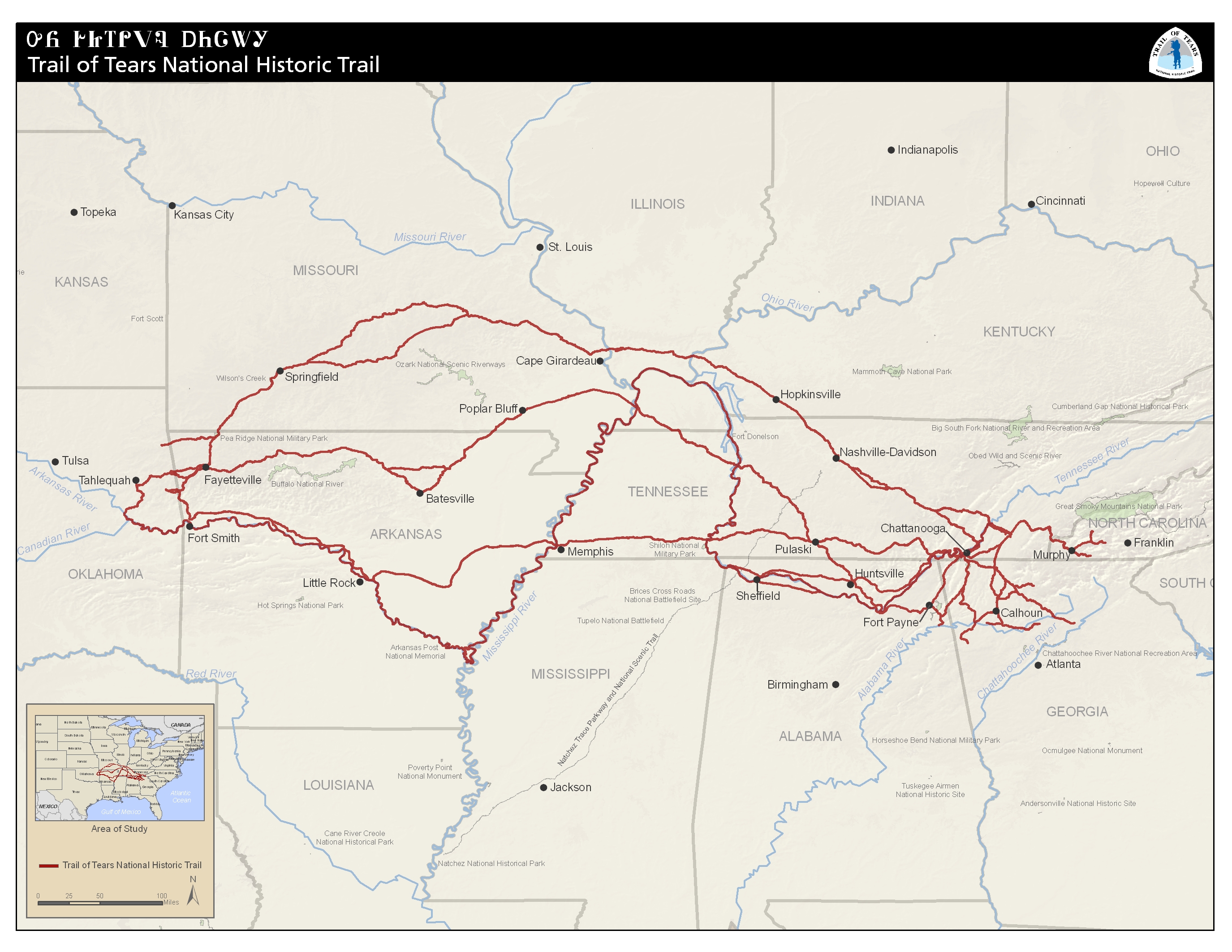Trail of Tears National Historic Trail

Looking for ways to explore history with kids this summer? Consider visiting the Trail of Tears National Historic Trail, just south of Jonesboro.
The Trail of Tears commemorates the forcible removal of more than 16,000 Cherokee, black slaves and other tribes from their homelands (in northwest Georgia and adjacent Tennessee, Alabama and North Carolina) to Oklahoma in 1838 and 1839. The impact to these people was devastating. Hundreds of Cherokee died from cold and hunger during the trip west, and thousands more perished from the consequences of relocation.
Recent improvements made near Hamburg Hill, located south of Jonesboro, include a visitor parking area and restroom. The Forest Service will continue restoration work later this year and install new interpretive signs. This work is being completed, in part, through National Park Service Connect Trails to Parks funding.
 The Jonesboro and Vienna offices recently acquired the Trail of Tears National Historic Trail cancellation stamp for the Passport to Your National Parks Program, led by the National Park Service. The program began in 1986, with the passport book and cancellation stamp serving as a record of park visits. Today, the cancellation stamps are available at nearly all 417 National Park units and several affiliated sites, such as Shawnee National Forest. Visit the trail and get your passport stamped at either national forest offices.
The Jonesboro and Vienna offices recently acquired the Trail of Tears National Historic Trail cancellation stamp for the Passport to Your National Parks Program, led by the National Park Service. The program began in 1986, with the passport book and cancellation stamp serving as a record of park visits. Today, the cancellation stamps are available at nearly all 417 National Park units and several affiliated sites, such as Shawnee National Forest. Visit the trail and get your passport stamped at either national forest offices.
More about the trail
Illinois was one of the most difficult stretches of the Trail of Tears. Cherokee were trapped for weeks because they could not cross the frozen Mississippi River. One person wrote at the time: “The days and weeks spent in crossing southern Illinois were the most brutal for the Cherokee Nation. Many landowners would not allow the Cherokee to camp on their land or cut firewood for warmth and hot food. Only adding to the Cherokee’s misery, the Mississippi was frozen solid far out from the river bank and in the center were blocks of ice as big as houses. As the water flowed, the huge ice blocks crashed down the current, rear on edge and crash down with mighty shocks. This fearful noise went on day and night for a month as the Cherokee watched the mighty Mississippi in awed wonder as they waited to cross into Missouri.”
In 1987, Congress passed an act that created the Trail of Tears National Historic Trail. The trail is administered, in partnership with other private and public entities, by the National Park Service National Trails Intermountain Region. The three federally-recognized Cherokee Tribes — Cherokee Nation, the United Keetoowah Band of Cherokee Indians in Oklahoma and the Eastern Band of Cherokee Indians — designated the trail a Sacred Site in 2016 because of its spiritual values and connections that are a part of this landscape.
Plan for your visit
Before visiting the Trail of Tears National Historic Trail with schoolchildren, learn more about the trail’s history.
- Start with the Cherokee Nation’s history of the trail.
- Then, read about the Trail of Tears National Historic Trail.
- Check out this presentation from Shawnee National Forest, which includes information about the trail and its history in Southern Illinois.
- Additionally, here is a list of additional education resources from the National Park Service. Lastly, for information on how to access the parking area near Hamburg Hill, contact the Mississippi Bluffs Ranger District at (618) 833-8576.
National Park Service
More than 20,000 National Park Service employees care for America’s 417 national parks and work with communities across the nation to help preserve local history and create close-to-home recreational opportunities. Learn more here.
Learn more about the Passport to your National Parks Program.

